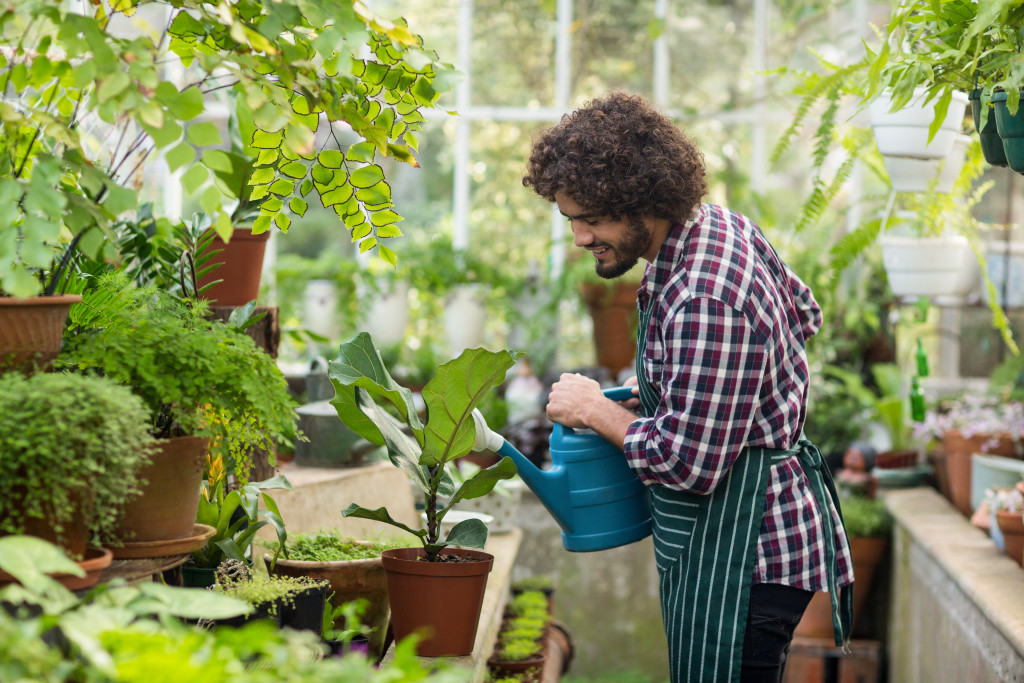So you just bought or built a greenhouse with the help of general contracting services in your area, and of course, you can’t wait to get started on your gardening. Having a greenhouse is a terrific addition to your home, especially if you are passionate about developing your green thumb. With a greenhouse, you can make the most out of the sunlight and yield crops even during the more difficult seasons. With proper planning for space, soil, water, and temperature, you can maintain fruitful harvests at any time of the year.
Plants grow better in greenhouses because of the controlled environment. Here, you can install automatic timers to control the watering system and automatic ventilation that controls the airflow. You can also make use of moisture regulators to control the humidity, which helps greatly in peak plant development.
For beginners such as yourself, greenhouse gardening can be overwhelming at first, so to help you out, we’re giving you a list of greenhouse plants that are perfect for newbies. They are easy to find, easy to grow, and will serve as great practice for growing those other plants that are trickier to grow. These plants include fruits, vegetables, herbs, and spices.
-
Carrots
Carrots are easy to plant, which makes it one of the most popular root crops for greenhouses. You can plant them even during the winter because it can tolerate frost. All you need is soil that is loose, sandy, and deeply tilled. Most carrots are resistant to many pests and diseases, which is fortunate because there are little or no chemicals available for managing such in carrots. Just make sure to plant disease-free seeds only.
-
Spinach
This cold and leafy vegetable can be grown all year round as it thrives in cooler weather. Growing spinach means having an excellent source of calcium, iron, and other essential vitamins for your dinner table. You can eat this raw or cooked. You will need soil with aged manure for planting spinach, which should be prepared around one week before planting. Keep the temperature at no more than 70 degrees Fahrenheit (ca. 21 °C).
-
Eggplant
This vegetable, also known as aubergine, survive in warm weather. The excellent way to plant these is to place them in raised beds with composted manure. Allow space for around 24 inches (0.61 m) as the plant can grow up to this height. The plant can also fall over once laden with ripe fruits, so consider using a cage to keep this upright. Eggplants will need the finest potting mixes and lots of water after planting. Harvest is after 16 to 24 weeks when the yield is a smooth, bright violet. Cut the fruit near its stem — don’t ever it off.
-
Tomatoes

When you have a greenhouse, you will always have tomatoes all year round. It thrives in the greenhouse because it hates freezing weather. You have to give it lots of heat and light to yield bright and juicy fruits. Remember that there are lots of tomato varieties to choose from, so it’s best to ask your seed supplier for help in selecting what will work best in your garden.
-
Raspberries
You can grow this any time of the year and expect to yield regularly. They grow best in cool conditions and do not require additional lights. Keep temperature to not more than 70 degrees Fahrenheit (ca. 21 °C). You will need to create a drip irrigation system for your potted raspberries because watering them overhead will cause the plants to rot.
-
Lemons
Who doesn’t want a steady supply of homegrown lemons even in winter? They are easy to grow since they require little attention once planted. You only need to make sure that you place them under the recommended lighting, moisture, and temperature.
-
Mint
This is an invasive plant that can appear in other parts of your greenhouse area, making it easy to grow. They are also competitive when it comes to getting light, water, and other nutrients. Remember to plant them about two inches under and 12 inches apart from each other. You can control the roots from reaching other plants by putting boards or placing the plant in deep canisters that can sink into your garden bed.
-
Catnip
This will benefit both you and your cat because catnip is not just an addictive plant for cats, but it is also great for recreational teas. Rubbing it on your skin gives you a natural insect repellant. Catnip grows up to three feet and thrives in lots of sunlight. Make sure to give it enough space, enough water, and proper drainage. Protect the plant from mold by putting just the right mist on the leaves.






